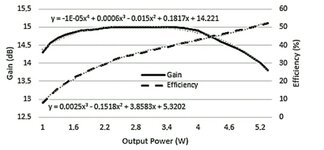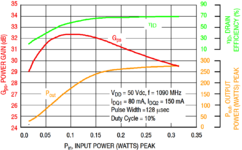mohamis288
Full Member level 3
Hi,
In the following, I have attached 2 images related to 2 different power amplifier. efficiency and power gain is approximately the same for all of the RF power amplifier. can someone explain about why does power gain has a peak?
In the following, I have attached 2 images related to 2 different power amplifier. efficiency and power gain is approximately the same for all of the RF power amplifier. can someone explain about why does power gain has a peak?

